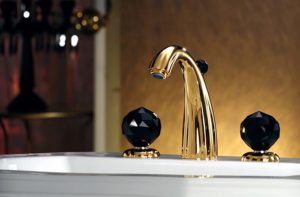Five Questions: Eleish Van Breems
April 22, 2017
Rhonda Eleish and Edie Van Breems of the antiques and interior design firm Eleish Van Breems talk about the timeless elegance of Scandinavian design.
Text by Kiener
 1. What’s the attraction of Scandinavian design for you?
1. What’s the attraction of Scandinavian design for you?
Rhonda Eleish: Edie and I both grew up with a lot of Scandinavian influences. When we decided we wanted to open an antiques and design business, we hoped to incorporate items from all of northern Europe. However, on our first buying trip we didn’t find anything that really moved us until we got to Stockholm. After two days in Sweden we had found enough antiques to fill a container. Over the years we have extended our range to also include Norway, Finland, and Denmark.
Edie Van Breems: We were obsessed with Scandinavian design and still are. The design is transporting. It is simple, yet elegant and of such high quality.
2. Are there distinct national styles or is all Scandinavian style similar?
Eleish: Historically, the differences came from geographic location and were influenced by such things as the minerals available for paint colors. Regions also had distinctive styles of carving and painting. In Sweden, totally different carving or painting styles developed in provinces just twenty miles away from one another. Gustavian furniture, a style influenced by the king of Sweden’s stay at the Court of Louis XVI at Versailles, is typically Swedish but was also made in Finland, Denmark, and Norway.
3. How applicable is this design to New England homeowners?
Eleish: Because Scandinavian design has distilled European design to very simple forms, it can look almost contemporary. One of our favorite things is to mix painted Scandinavian antiques from the eighteenth and nineteenth centuries with contemporary and midcentury furniture. When you put an eighteenth-century Gustavian console table next to a Danish piece from the mid-twentieth century, they have a dialog with each other. They work together because the forms are pure; there is no extraneous detailing.
Van Breems: It is always exciting to help clients incorporate elements of Scandinavian design into their American homes. There’s nothing better than an eighteenth-century Swedish chair next to a de Kooning!
4. What might surprise people about Scandinavian design?
Eleish: The craftsmen had a great sense of humor; there are political jokes, satire, and comments on human nature in a lot of the folk carvings they created. The elf, goblin, troll, and gnomes are some things they still have fun with. Also, unlike some Northern European design, Scandinavian design is light and airy. They used bold colors to brighten their long, dark winters.
Van Breems: The designers have a sweet, whimsical sense of humor, not at all mean-spirited. Modern examples include Danish furniture designer Hans Wegner, who called his famous chair the Ox chair because it looks like a bull’s head, or Eero Saarinen’s 1948 Womb chair.
5. How did Scandinavian painted furniture evolve?
Van Breems: Scandinavian furniture is famous for being multicolored. There are many different hues, layers, and washes used on the furniture. In the past, home interiors were painted by traveling artisans, and by the time they got to the furniture they experimented with different motifs, colors, and decorative elements. Copper, iron, and pink oxide were minerals available in the region and they resulted in strong pigments; a lot of the furniture was painted red or blue. The artisans became so well known that they can still be identified by their motifs. They turned furniture into works of art. •
Share
![NEH-Logo_Black[1] NEH-Logo_Black[1]](https://www.nehomemag.com/wp-content/uploads/2022/08/NEH-Logo_Black1-300x162.jpg)








You must be logged in to post a comment.